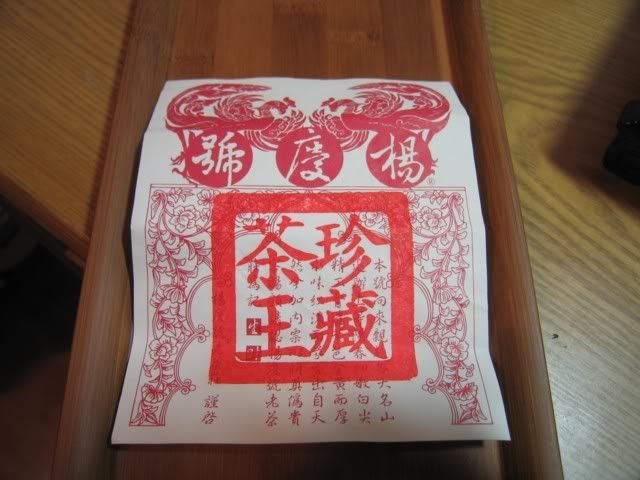
This is what’s on the menu today — the 2004 Yangqing Hao from Hou De.
My girlfriend brought it over after I ordered it and had it shipped to her in the US. We did the transfer in Paris, and now it’s with me, along with another sample.
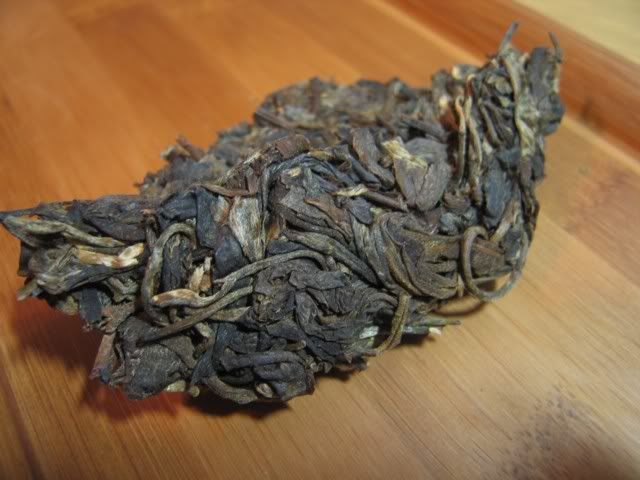
The dry leaves don’t look very remarkable, other than looking Yiwu-ish. One interesting thing though — when I sniffed the dry leaves (more like inhaling very deeply, actually) there is very little aroma. I couldn’t detect anything overtly strong. On the other hand, I remember the 2005 Yangqing Hao has a very obvious aroma. Food for thought.
So I brewed it according, again, to the 30/60/perpetual 30 rule…
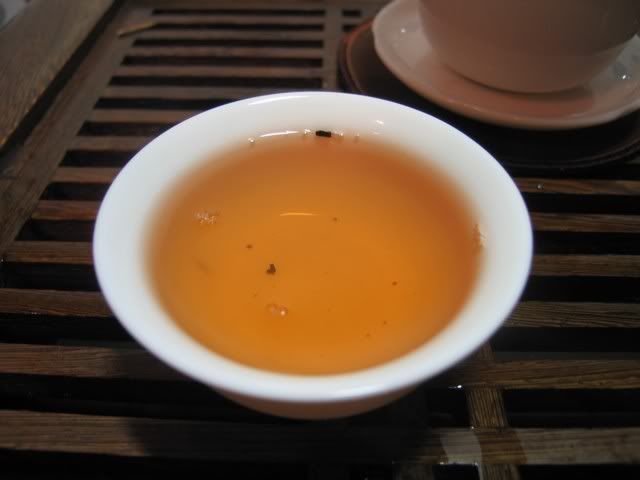
Infusion 1

Amount of leaves after infusion 1
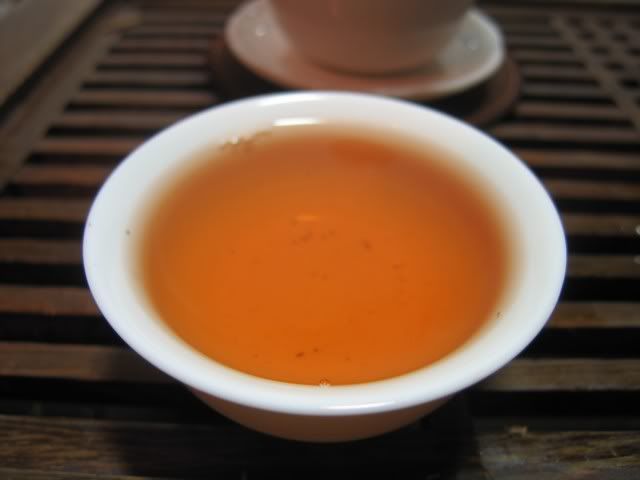
Infusion 3
How’s the tea?
It’s great.
It has the first hint of aged-taste. It’s not very prominent yet, but it’s there, and quite quickly, when you think about it… it’s only 2 years old. The tea is nice, thick, balanced, a little bitter, good huigan, “proper” aromas, no off tastes, smooth, endured lots of infusions… I couldn’t really find any faults with it, except that there’s no extension down the throat that I thought I would get. It didn’t go down the throat… all that aroma/taste/”mouthfeel” stopped at the back of the mouth/beginning of the throat. Of course, the price is also a little steep, but as a tea without regards to price, I could find nothing wrong with it. I liked it.

How it looked after I’m done.
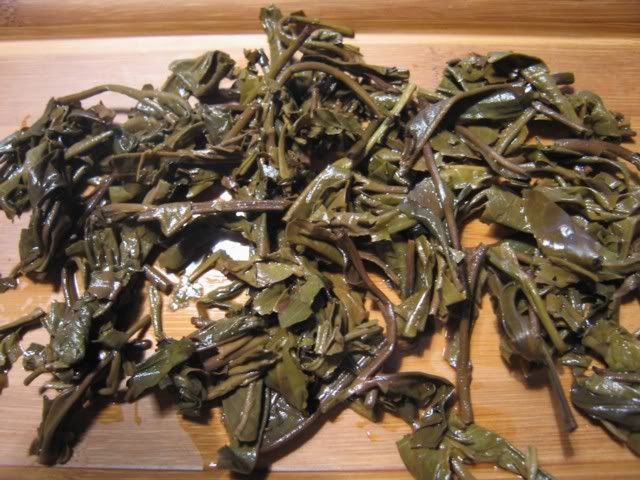
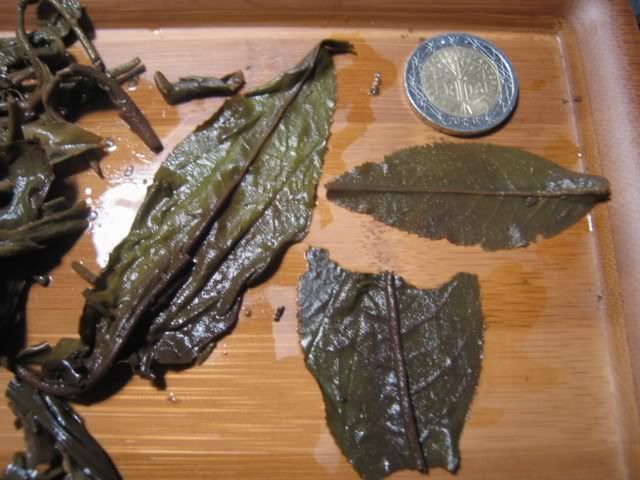
Wet shots — that’s a 2 EUR coin, about the size of a quarter. It also gives you a scale to see how thick those bands are on my bamboo tray. This will provide an instant scale from now on, I hope 🙂
If my Yiwu cakes can turn out like this in two years…. I’ll be very happy.

 RSS - Posts
RSS - Posts
4 responses so far ↓
davelcorp // November 21, 2006 at 6:27 pm |
The large leaf in the bottom shot looks very interesting. It looks like it has greener and darker coloration depending on how it wrinkled during the rolling? Am I correct that the darker part of the leaf had more exposure after compression?
MarshalN // November 22, 2006 at 7:20 am |
I don’t think so. The darker colour actually came from, I believe, the leaves turning red at some stage in the processing. This could’ve happened during the rolling, when the “kill-green” was not thorough enough and the rolling damaged the leaf and thus it oxidized. However, it could’ve also happened during the plucking process, where the leaf was damaged and sat in the basket for a while before getting to the wok for kill green in the first place.
The whole thing was actually rolled up pretty tight before I unfurled it, so the rolling was actually quite uniform for this particular leaf.
Gourav // June 9, 2012 at 1:41 am |
This makes me sad. There are so many unknowns in puer that I’ve all but given up trnyig to get more heavily into it. But today I did drink what I considered to be a great 2001 yiwu cake bought from puerhshop.com last year. It had this lingering sweetness that I haven’t tasted with any other tea (I’d almost suspect it was adulterated, except the sweetness was stronger in later brews). In any case, given that this tea is very close to your drain cleaner age, I remain hopeful that all is not lost for persons like me who aren’t really in a position to buy and drink cakes made much before 2001. I still see something great and unique that puer has to offer. I just wish it wasn’t so hard to buy.
A blast from the past | A Tea Addict's Journal // June 22, 2013 at 10:58 pm |
[…] can’t seem to find any of my notes for the 2005 sample. I do have my notes for the 2004 version. I was in Beijing at the time, and I don’t think I really knew what I was doing. I did, […]